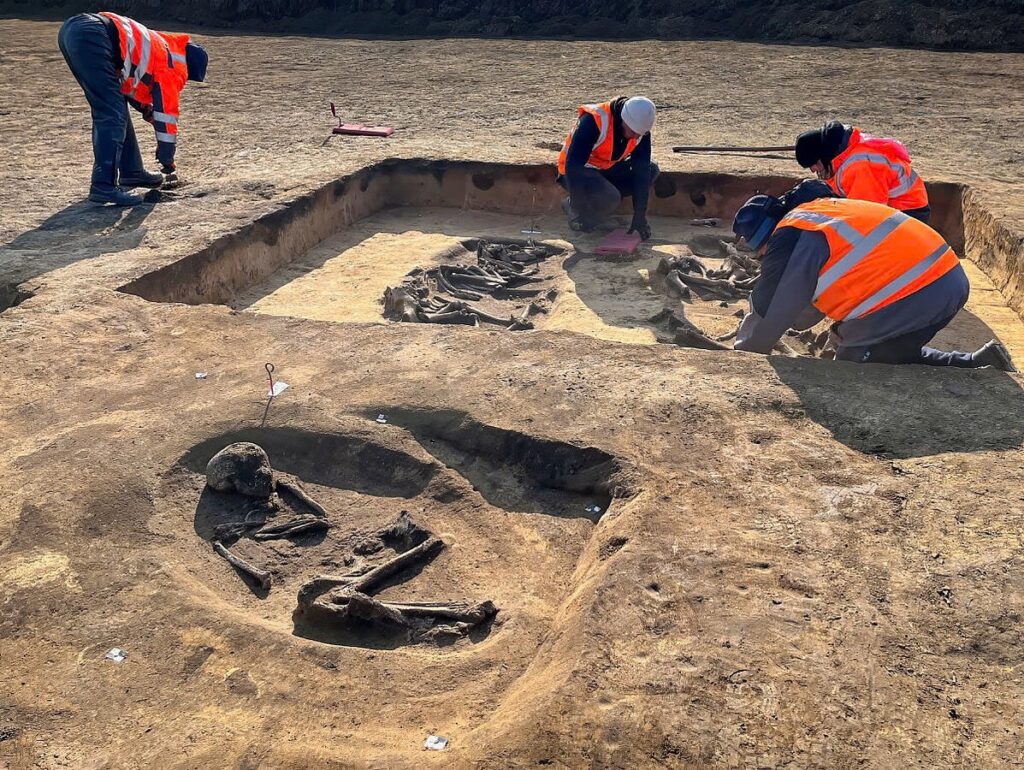Neolithic Mounds Unearthed Near Magdeburg
In an unexpected turn of events, the proposed construction of a semiconductor facility by US chipmaker Intel has resulted in an incredible archaeological find close to Magdeburg, Germany. Archaeologists from the State Office for Heritage Management and Archaeology Saxony-Anhalt (LDA) have discovered a significant Neolithic burial landscape at Eulenberg, dating back around 6,000 years.

Two Monumental Mounds Illuminate Ancient Burial Customs
The excavation revealed two large mounds, located 200 meters apart, each containing several burials within wooden grave chambers. These trapezoidal chambers, ranging from 20 to 30 meters in length, provide insight into the burial traditions of the Baalberge Group, a late Neolithic culture that thrived in Central Germany and Bohemia between 4100 and 3600 BC.
A Corridor of Ritual and Sacrifice

Even more captivating is the identification of a ceremonial pathway connecting the mounds, utilized approximately 1,000 years after their initial construction. During the Globular Amphora Culture era (3300-2800 BC), this corridor served as a site for ritual sacrifices, featuring young cattle buried alongside human remains. One particularly intriguing arrangement appears to symbolize a cart with a driver or a plow being drawn by cattle, underscoring the significance of livestock in ancient society.
Enduring Sacred Ground

The site’s relevance endured over time, with indications of continued usage about 1,000 years later. A palisade ditch was built along the old processional route, incorporating the larger of the two burial mounds while meticulously preserving the earlier cattle interments. Furthermore, several burial mounds from the Corded Ware Culture, dating from around 2800-2050 BC, were discovered nearby, further highlighting the area’s long-standing ritual significance.
Racing Against Time
With Intel’s construction timeline approaching, archaeologists are making every effort to finalize their excavations by the end of April. This urgent race against time illustrates the challenging balance between advancement and preservation as they strive to document and comprehend this remarkable aspect of Germany’s archaeological heritage before it succumbs to modern development.

